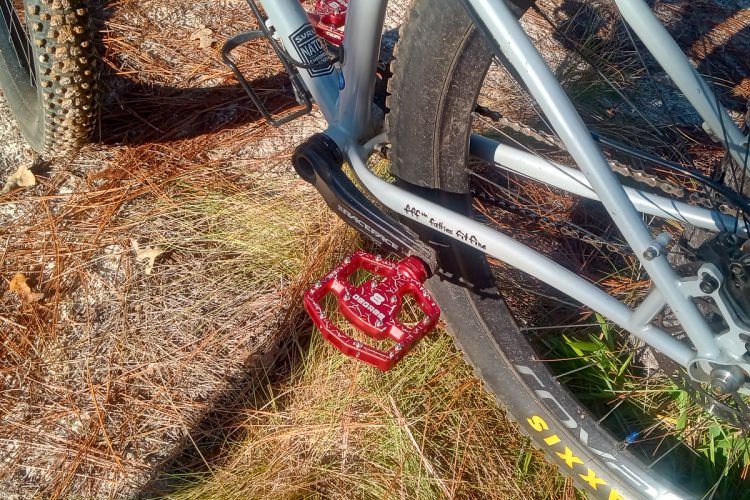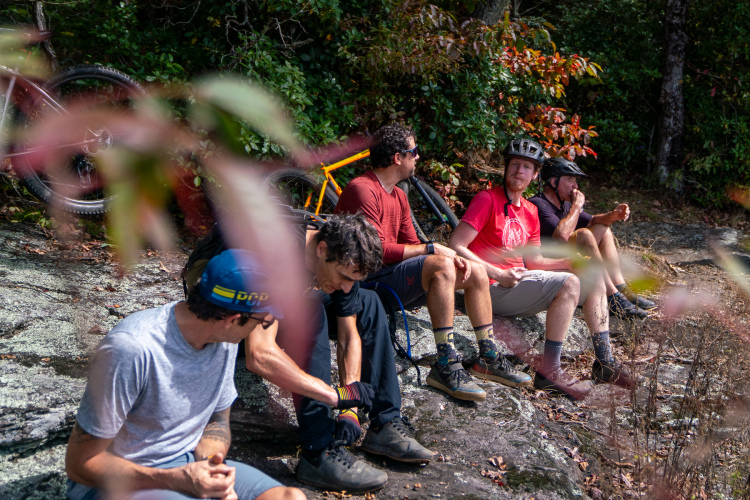
Mountain biking: for many, it’s a way of life. Take a moment to think about why you started, and why you continue–what about it satiates your personality? The adrenaline of the race? The beautiful landscapes traversed during a tour through the mountains? The sheer curiosity of how far you can push your physical and mental boundaries? Whatever it is, good for you–bikes kick ass.
Riding a bike synergistically elevates physical and mental health to many good places. Some people ride every day, commuting to and from work or elsewhere. Many people ride year-round. But, is it healthy to ride 12 months out of the year? Yes.
In fact, if you look at the physical activity and fitness guidelines established by the American College of Sports Medicine, it’s recommended that adults engage in at least 150 minutes of moderate-intensity activity per week–just to maintain health. To be fit, the requirement is higher–you get what you give.
Here’s the catch (there’s always a catch). A very fine line exists between working hard and overworking. If you’re a serious athlete, someone who tours, or simply a stoked individual who just likes to shred trail a lot, be mindful of your output. Exercise is a stressor with many positive benefits, but too much of a good thing can have negative implications: increased risk for injury, mental burn-out and, more severely, the dreaded overtraining syndrome (OTS).
Where and how do you draw the line?

A chronology of red flags–are you overdoing it?
Overreaching, the proper term for what is commonly called “overtraining,” is an unwanted detriment to any training experience, whether the goals are professional or for personal enjoyment. Many of us have suffered from overreaching by poorly periodized training (or no periodizing at all). Without taking the time to “backwards plan,” incorporating easy weeks, strength training, and rest days, anyone can run the risk of subjecting their body to too much training volume or load (too many high-intensity efforts).
Overreaching leads to a decrease in performance, and no one wants that. Many athletes and individuals that experience short-term overreaching recover fairly quickly after a few days of rest. But long-term episodes will lead to an interference in training time, more time off the bike–we’re talking weeks to months–as well as neurological and musculoskeletal symptoms.
Think about it this way: training is pointless without proper recovery. When training is appropriate and balanced with adequate recovery, performance gains are seen over time. If a disparity exists, the body is unable to prepare for the next session. It becomes hard-pressed to restore depleted glycogen, respond to inflammation, and repair damaged and stressed muscle tissue. This doesn’t even take into account long-term gains like skeletal muscle hypertrophy (leading to increases in strength) or mitochondrial mass increases (leading to increased aerobic capacity)–supply and demand are just too imbalanced if recovery is inadequate.
The worst thing you can do is to push through it, because you can’t just “push through” overreaching. At the point of diminished power output and/or endurance, it’s too late. You MUST rest.
There are many long-term effects associated with chronic overreaching. It will inevitably lead to overtraining syndrome (OTS), a serious physiological impairment. OTS is not the same thing as classic overreaching. OTS is much more severe, stemming from uncontrolled inflammation, neurological impairment, and adrenal insufficiency and depletion.
Red flags: Insomnia, poor heart rate recovery/tachycardia, irritability, anxiety, restlessness, and loss of motivation or burn-out. More severe symptoms include anorexia, mood and behavioral changes, and chronic fatigue syndrome (CFS).

How to ride year-round and reap the benefits of mountain biking:
- Listen to your body. Painful muscles, salt and/or sugar cravings, difficulty sleeping, increased irritability–these are all signs that you may be overdoing it. Give your body what it is asking for. The sooner you do so, the sooner you can get back to a more appropriate exercise routine.
- Where is your fitness? Understand what you are working with, establish some baseline values, and go from there. More importantly, accept it. Rome wasn’t built in a day, and neither were quads that can sustain long or intense efforts.
- Put together a proper training plan. If you’re someone who races, bikepacks, or engages in any other type of mountain biking event that requires preparation, this piece of advice may save your butt (literally). Time put into constructing a periodized plan up front will help prevent unforeseen injuries, fatigue, or other health problems later on. And, don’t be afraid to ask for help–find a consultant or coach with a good reputation or services specific to your needs.
- Ensure you recover. For emphasis… ENSURE YOU RECOVER. Input and output must be balanced–nutritionally, energetically, etc. Training becomes pointless without enough day-to-day recovery. In fact, performance reaps the benefits of recovery, so they must be complimentary. Adequate sleep is extremely important, and so is stretching, adequate caloric intake and macronutrient balance (i.e. ensure your protein-fat-carbohydrate ratios are tailored to your exercise volume and intensity).
- Change it up to avoid burn out. Run, lift, swim, ski, snowboard–do whatever you like. Plus, proper cross training can provide a wealth of benefits too, such as improvements in strength and power (depending on what you choose), and improvements in bone health, a major issue for cyclists who only ride.
- Eat enough — and this means on the bike, too.
- Acknowledge other stressors. Large changes in altitude or environmental temperatures are hard on the body, and adaptation periods are required. In addition, be aware of other life stressors that may affect bike time or focus, such as increases in work stress, shift changes, financial difficulties, a recent illness, or other physical issue such as an injury.
- Don’t be afraid to cut back or take time off. Sometimes a hiatus is exactly what you need, mentally and/or physically. This is absolutely, positively ok! At the end of the day, no matter what you do, remind yourself why you ride a bike in the first place–why is it a part of your life day to day? You can always go from there.

References:
American College of Sports Medicine. (2013). ACSM’s guidelines for exercise testing and prescription. Lippincott Williams & Wilkins.
Brooks, K. A., & Carter, J. G. (2013). Overtraining, exercise, and adrenal insufficiency. Journal of novel physiotherapies, 3(125).
Carter, J. G., Potter, A. W., & Brooks, K. A. (2014). Overtraining syndrome: causes, consequences, and methods for prevention. J. Sport Hum. Perform, 2, 1-14.
Issurin, V. B. (2010). New horizons for the methodology and physiology of training periodization. Sports medicine, 40(3), 189-206.
Kreher, J. B., & Schwartz, J. B. (2012). Overtraining syndrome a practical guide. Sports health: a multidisciplinary approach, 4(2), 128-138.
Yan, Z., Lira, V. A., & Greene, N. P. (2012). Exercise training-induced regulation of mitochondrial quality. Exercise and sport sciences reviews, 40(3), 159.










4 Comments
Jan 10, 2017
Jan 10, 2017
Jan 10, 2017
So too much and too few of a ride still result in irritability, maybe? My wife always tells me I'm cranky if I didn't ride for a few weeks :)
Jan 10, 2017